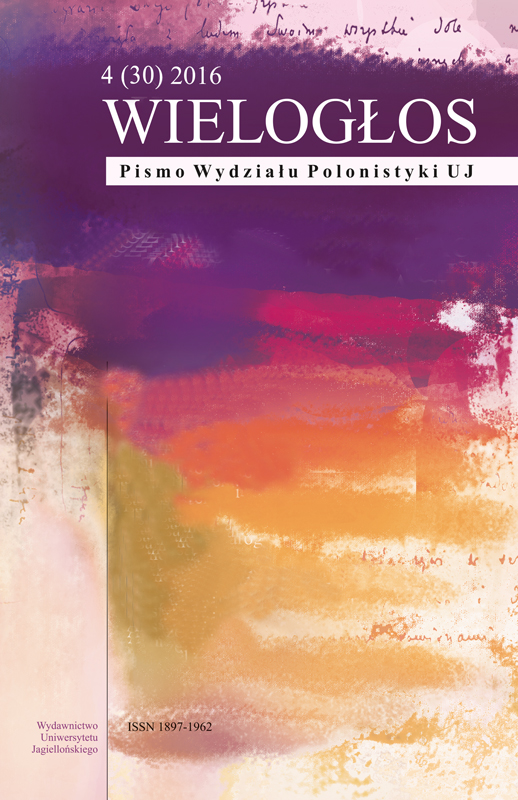Centrum i peryferie. „Król w Nieświeżu” Józefa Ignacego Kraszewskiego i polska kultura operowa XVIII wieku
The centre and periphery. “Król w Nieświeżu” by Józef Ignacy Kraszewski and the Polish opera culture of the 18th century
Author(s): Małgorzata SokalskaSubject(s): Studies of Literature
Published by: Wydawnictwo Uniwersytetu Jagiellońskiego
Keywords: Enlightenment of the Stanislaus time; opera; nobility theatre; J.I. Kraszewski; J.D. Holland
Summary/Abstract: Beginning with the novel Król w Nieświeżu. 1784. Obrazki z przeszłości [The King in Neśwież. 1784. Images of the past] by Józef Ignacy Kraszewski, the author of the article focuses on selected aspects of the 18th-century Polish opera culture and its infl uence on shaping the contemporary artistic and social worldview. Embodied by two main characters of the novel, Prince Karol Radziwiłł and King Stanisław August Poniatowski, the contrast between, on the one hand, the centre – the enlightened Warsaw and the vision of a new type of government and culture following Western patterns – and on the other hand, the periphery – the eastern borderline, lawless aristocracy and relics of the Sarmatian culture – allows us to take a closer look at the contemporary Polish opera from these two perspectives. This genre, transplanted as early as in the 17th century from the Italian tradition, and symbolizing the presence of Western infl uences in Poland and the Polish theatre being part of the European culture, becomes, at the end of the 18th century, the nucleus of the national theatre and the dramatic genre – not only in the offi cial, Enlightenment version, practised in the Varsovian centre, but also, due to its popularity, in the peripheral centres of culture of the gentry, including numerous aristocratic courts. The presence of the opera within Radziwiłł’s cultural horizon, as documented in Kraszewski’s novel (Agatka, czyli przyjazd pana [Agatka, i.e. the Arrival of the Lord], staged on the occasion of the king’s visit), constitutes one of the elements of the dialogue conducted by the two cultural circles and representatives of the antagonistic milieus depicted in the novel. It also turns out that the Polish culture of the epoch, considered from the opera perspective, displays surprising thematic, aesthetic, and ideological similarities between its centre and periphery.
Journal: Wielogłos
- Issue Year: 2016
- Issue No: 30
- Page Range: 1-21
- Page Count: 21
- Language: Polish

